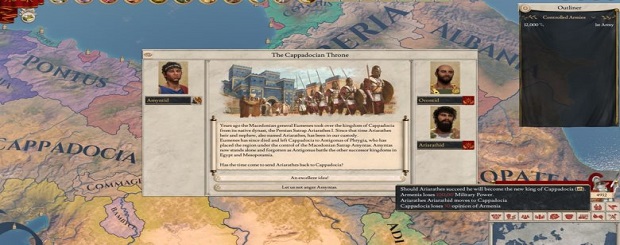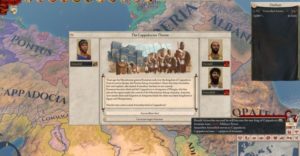
Hittites. Neighbors of the ancient Armenians (Hayas, Armattany, Armanum).
Documentary.
Sunday, January 12, 2020 – 24 hours ago

Hayasa (Hitt. URUḪaiaša-, Armenian Հայասա) or Hayasa-Azzi (Armenian Հայասա-Ազզի) – the state mentioned in the Hittite cuneiform texts from the XVI to XIII centuries. BC e. Most hittologists place Hayas in the upper reaches of the Chorokh and Euphrates rivers, on the territory of the Armenian Highlands. During this period, Hayas sometimes made peace with the Hittite kingdom and paid tribute to the Hittites, sometimes entered into military conflicts with him. By the XIII century BC. e., probably Hayas broke up, and its territory was captured by the Hurrians. During this period, the territory of Hayasa could belong to the Hurrian kingdom of Dayan.
According to R.A. Ishkhanyan, the capital of Hayas was the city of Kummakh in the upper Euphrates River, near the modern Turkish city of Erzincan.
Content
1. History
1.1 BC To Thudhalia III (1500–1340 BC)
1.2 Thudhalia III and Suppillium I (1340–1320 BC)
1.3 Mursili II (1320–1290 BC)
2 Hayasa and Armenia
3 List of Kings of Hayas
To Thudhalius III (1500–1340 BC)
Before the reign of Tudhalius III, information about Hayas obtained from the Hittite sources is very scarce. It is known that in the XIV century BC. e. the Haystans invaded the Hittite territories and burned their new capital – Sapinuva, after which they made the city of Samukha their border. From cuneiform tablets, the names of several Khayas kings are known – Mariya, Karanni, Hukkana, Anania. Names of Indo-European origin. There are also horse breeding Indo-European terms.
In 1405 BC, during the reign of King Marias, the Hittites attacked Hayasa and robbed her of the Tsopk province, the war continued already under the successor of Mariya Karanni. OK. 1397 BC e. the Hittites defeated Karani at the Battle of Kathalaia (in Cappadocia). Building on success, the Hittites again attacked Tsopk, but were repulsed. In the same year, a battle took place near the fortress of Ani (Kamakh), as a result of which the Hittite troops were forced to retreat. The war lasted until 1380 BC. e. The army of Caranni several times attacked the territory of the Hittite kingdom and devastated it. In 1380 BC e. Caranni even managed to capture the capital of Hattus and burn it. Around 1375 BC e. the Hittites tried to land on the Black Sea coast of Hayasa, but in the ensuing battle they suffered serious damage and were discarded. In the year 1350 BC e. The Hittite kingdom was captured by Tsopk (Tsupani), but in 1349 BC e. Hukanna managed to recapture this province. In the year 1345 BC e. the Hittites again occupied Tsopk, as a result of the Principality of Togarma and Melid, they passed to the Hittites, and Hukanna had to accept the supremacy of the Hittite kingdom. However, this did not prevent him from attacking Cappadocia in the same year and thereby forcing the Hittites to retreat from the territory of Mitanni.
Thudhalia III and Suppillium I (1340–1320 BC)
After assuming the throne, Tudhalii III sent his commander and successor (who later became king of the Hittite state) to Suppilium to conquer the Hayastians, who harbored fugitives from Hittite territory, and return the city of Samukh. He signed a peace treaty with the ruler of Hayasa Hukkanoy Suppillium. According to this agreement, Hukkana took the oath of allegiance to Supppillium, pledged to provide him with military assistance and to observe the Hittite state secrets that had become known to him, and also to continue to extradite persons who had fled from the Hittite kingdom to Hayasu. Suppilulium gave his sister for Hukkan, but at the same time made a curious reservation forbidding King Hayasa from claiming other women of the Hittite royal house, which indicates the existence in Khayas of remnants of a very ancient marriage relationship – the right to cohabit with sisters and cousins of his wife [source not specified 2852 days ].
In 1324 BC e. the Hittites seized the fortress of Dukkum and the city of Erznka, but as a result of fierce resistance, Annias again had to go to peace.
Mursili II (1320–1290 BC)
In 1324, 1321, 1320, 1319, the Hittites made a number of campaigns in the territory of Hayasa, but did not achieve serious success. In the same year 1319 BC e. The Hittite kingdom tried to capture the fortress of Ur, but was repelled. In revenge, the Ananian army captured Arrina and Ankuwa and, devastating the surroundings, retreated. Anania attacked the Hittites in the same way in 1318 BC. e., basically already by the forces of the princedom of Kaska. In 1317, another Hittite attack followed, but under the same fortress of Ur, the Hittites suffered a serious defeat. The following year, the Hittites were defeated already near Canuvara.
Hayasa-Azzi was not mentioned in the Hittite sources for some time, until the reign of Mursili II. During the Hittite Helmet War, the Hayastians again began to hide the fugitives from the Hittite territory, and the leader, Azzi Annia, son of Maria, attacked one of the Hittite regions and stole cattle and prisoners from there. At the request of Mursili, Anny refused, as a result of which the Hittites started a war and besieged the impregnable Aztsi fortress of Ur. However, the main actions against Azzi-Hayasa unfolded in subsequent years, since Mursili had before him more important opponents in the person of the Assyrians, who continued to build up military power.
In the tenth year of his reign, Mursili, at the head of the main forces, opposed the Hayastians. They took refuge in mountain fortresses, hoping to attack the passing Hittite troops at night. However, Mursili, leaving most of the mountain fortresses in the rear, apparently crossed the Pontic Mountains, went to the city of Aripse on the Black Sea and took it, and from there moved to Tukkama – apparently the center of Azzi. The inhabitants of Tukkama surrendered to the mercy of the winner, and Mursili enrolled 3 thousand Aztsians in his army as chariots. Negotiations this time were not with the king, but with the advice of the elders of Azzi. The country was included in the Hittite kingdom, but later the Hittites failed to keep it.
Hayas and Armenia
In the first half of the 20th century, some researchers suggested that in the word “Hayas” the root is “haya” (haya), which corresponds to the Armenian self-name – “hay” (hay), and the word “(a) sa” ((a) sa) is a Hittite suffix that means “country.” One of the first to introduce this theory was E. Forrer and was developed by German researcher Paul Kretschmer [6]. Kretschmer devoted much time to studying the issue of the country of Hayas. In a work published by the Vienna Academy of Sciences in 1933, Kretschmer’s “National Name of Armenians Haik” (German: Der nationale Name der Armenier Haik), he concludes that “the name Hayas used in the Bogazki inscriptions means“ Armenia ”. Such Asian words as “Turhunt” and “Datta” were presented as examples, which, using the suffix “(a) sa” ((a) sa), acquired the meaning of the toponyms (countries) “Turhuntasa” and “Dattasa”. Later in Armenia, this point of view was supported by Nikolai Adonts, Grigory Kapantsyan and other historians. Gevork Dzhaukyan, developing this scheme, also proposed the words “Harsankila”, “Parminaija”, “Hiwaswanta” and so on, which, getting the meanings of toponyms, respectively got the form “Harsanasa”, “Parminasa”, “Hiwasasa”. On this occasion, he wrote: “The main language of Hayas was Armenian and … the Armenian element had a dominant role in the Haya state.” Rafael Ishkhanyan believes that in the dialect of the Armenians of Van and some other areas of Armenia (for example, the Armenians from the western shore of Lake Sevan), the Hitt. Ḫ is replaced precisely by the hornbeam Խ-, which means the possibility of transforming the Hittites. Ḫajasa in the grabar Հայք (hay-kʿ).
The point of view regarding the origin of the antonym hay and the identity of Hayas and Armenia was supported by Vyacheslav Ivanov. Nevertheless, Ivanov believed that for any reasoning about Hayas as an Armenian ancestral home, there is not enough data.
According to historian Armen Ayvazyan, the denial of the Armenian-Hayas relationship is politically motivated and aims to deprive the Armenians of their autochthonous right in the Armenian Highlands. However, as the press sympathetic to Ayvazyan notes, a minority of historians share his views in Armenia. There is an opposite opinion that the version of Hayas as the ancestral home of the Armenian people is politically motivated in order to further confirm the autochthony of the Armenian ethnos in the Armenian Highlands. Dyakonov suggested that the self-name of the Armenian grabar граայք (hay-kʿ) probably comes from the Urartian name Melitena, Urartsk. Ḫāti. In this regard, Vyacheslav Ivanov notes the complete fallacy of all the constructions of I. M. Dyakonov regarding the origin of the ethnonym hay and other issues of ethnogenesis of Armenians and supports the correct conclusions of G. A. Kapantsyan.
ORIGINE SOURCES- nashaarmenia.info/2020/01/11/78624/
